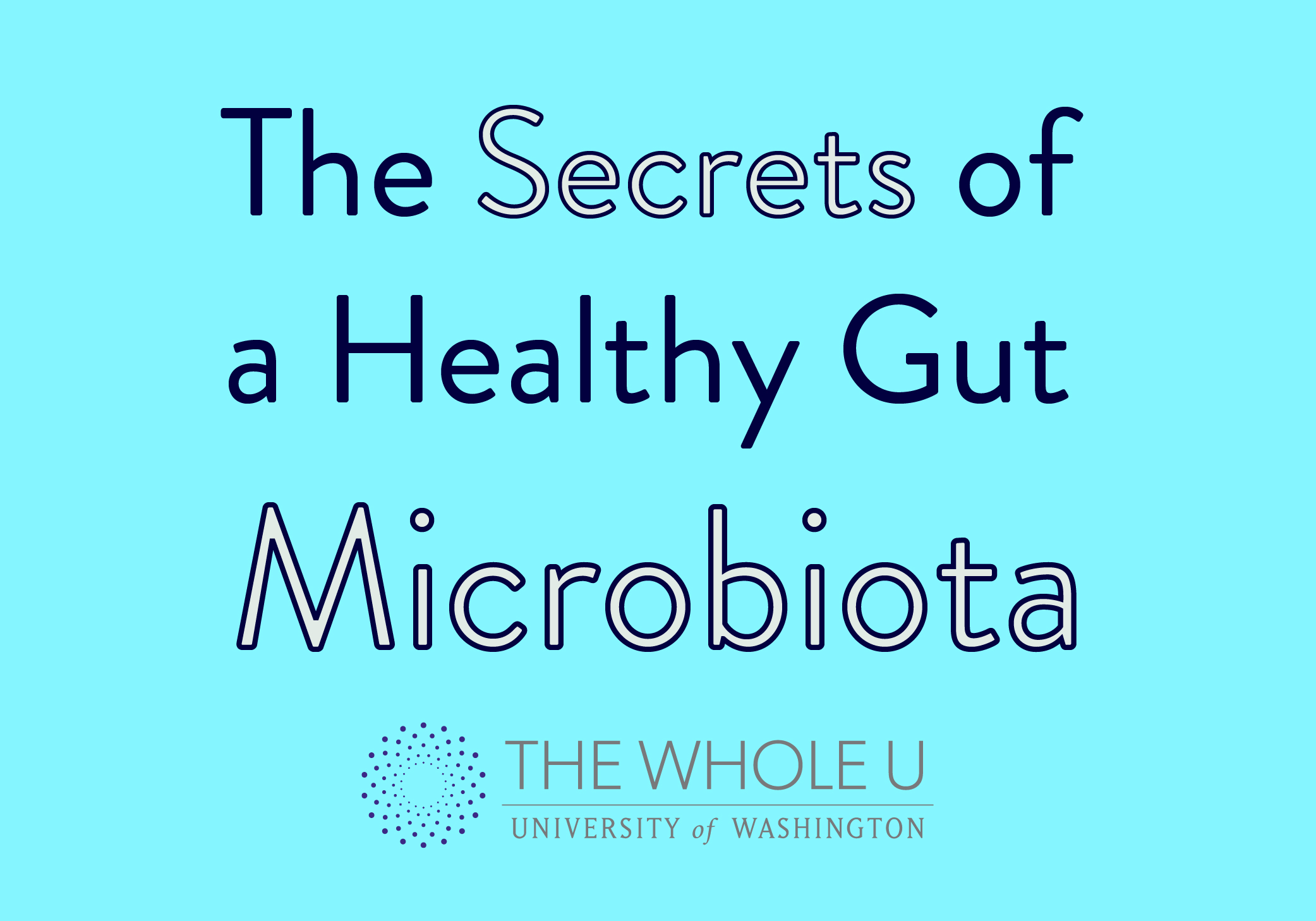
The Secrets of a Healthy Gut Microbiota
There’s not just one diet, food item, dietary supplement, pill, or powder that fits all or is a fix all. Food/nutrition and its impact on our health is much more complex than that.
An example of this is the connection between diet and our microbiota. The term microbiota refers to the collection of microorganisms (including, but not limited to, bacteria) living on and within us. But don’t get me wrong, these are good bacteria and are essential to keeping us healthy! We rely on our microbiota, or good bacteria, to extract nutrients from food to help fuel our bodies, synthesize vitamins that we could not otherwise make, keep our immune systems functioning properly to help fight off harmful microorganisms, and much more.
Gut microbiota (formerly called gut flora) is the name given to the microorganisms living in our intestines. Our gut microbiota contains tens of trillions of microorganisms, including at least 1,000 different types of known bacteria. Considering that we consume four to five pounds of food every day on average, I think it’s safe to say that what we eat matters to our gut microbiota! This fascinating video explains more:
There is growing evidence that the high-fat, high-sugar diet, known to us as the Western diet, has had detrimental effects on our microbiota. Researchers now believe that these detrimental effects may have contributed to the growing epidemics of chronic diseases such as obesity, allergic disorders, irritable bowel disease, and harmful infections.
So, until there is a magic elixir for healthy living, try these things to help promote a happy and healthy gut.
- Eat fermented foods. Friendly bacteria, often called probiotics, are found in fermented foods. The word probiotic comes from the Greek words meaning “promoting life.” So when purchasing fermented foods from the store, make sure to look for “living” or “live” on the label. If it doesn’t say “live active cultures,” it has likely been pasteurized after fermentation. Here are some great examples of what to look for:
- Fermented dairy such as yogurt or kefir
- Fermented vegetables such as sauerkraut or kimchi
- Fermented soy such as tempeh or miso
- Fermented drinks such as kuvass, kombucha, amazake or water kefir
Did you know that there are books on how to make fermented foods/drinks in your home kitchen? Check your local library to see what they have available!
- Vary your diet. The amount and type of probiotics in food vary, so include more than just one type of probiotic containing food into your diet.
- Include prebiotics. Prebiotics are nutrients in foods that increase the growth or activity of our friendly gut bacteria–without prebiotics our friendly gut bacteria would starve.
- The most common type of prebiotic is from the soluble fiber called inulin.
- Inulin is naturally present in bananas, onions, garlic, leeks, asparagus, artichokes, and various herbs.
- Eat your fruits and veggies. A number of studies, including controlled dietary experiments in humans, have shown that diets higher in fruits, vegetables, and fiber are associated with increased microbial abundance. Cruciferous vegetables (broccoli, cauliflower, and cabbage) in particular may help, but more research is needed to confirm this.
- Exercise. Preliminary research has shown us that exercise increases the diversity of our gut microbiota.
Do you have a favorite way to sneak more these foods into your diet? Let us know in the comments!
 Amanda Sullivan is a registered dietitian and certified nutrition support clinician who works in the Radiation Oncology clinic at the University of Washington Medical Center. Outside of work she enjoys rock climbing, gardening, cooking, playing board games, and spending time with her dog, Hula.
Amanda Sullivan is a registered dietitian and certified nutrition support clinician who works in the Radiation Oncology clinic at the University of Washington Medical Center. Outside of work she enjoys rock climbing, gardening, cooking, playing board games, and spending time with her dog, Hula.
This post was originally published in the RD Blog. You can visit the RD Blog and see its archives if you have a UW Medicine ID.